The ill-famed Bay of Biscay showed her true self on March 16th.
But this wasn’t Puffin’s first rodeo, and we wouldn’t have noticed the heavy weather if the replaced Windpilot had been the right size.
Unfortunately, the servo pendulum was 200 mm shorter than the original one and was frequently in the air—even after the exhausting labor to tilt the boat to her stern.
So, I had to slow down, reduce the canvas and focus on the safe finish.
On March 17th, we passed the northbound shipping lane. We were 235 nautical miles from Les Sables d’Olonne. It was shocking to hear that Tapio was 4320 miles away from the finish line.
The other bad news was the arrival of a huge anticyclone building a widespread speed bump in the Bay.
Based on their weather forecast, the Race management predicted a significant delay in my arrival.
But the almighty arranged a different schedule and gifted us with a unique weather phenomenon. There was no airflow at sea level but a 7-8 knots breeze just above Puffin’s boom.
We glided with 4-4.5 knots on the mirror-like sea surface—hypnotized by the complete calm and silence.
On March 21st, 2019, the Sun rose exactly in front of Puffin’s bow, and the Moon sank into the ocean aligned with her stern. We were ready to deliver the first day of Spring to Les Sables.
The familiar coastline of this lovely place faded into the eastern horizon. And Puffin —after her 263 days of the nonstop voyage—was accelerating towards land with the increasing breeze.
At 11:30 LT, we crossed the finish line of the Golden Globe 50th Anniversary Race.
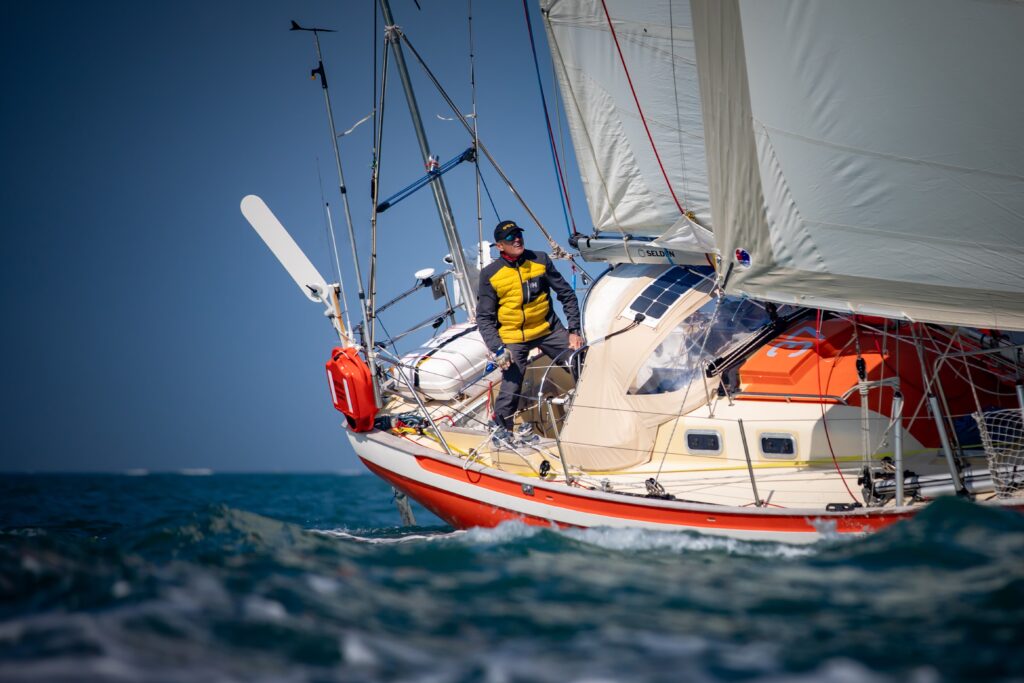
Crossing the finish line , photo credit to Brigi Torok
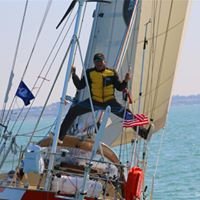
Finish jump
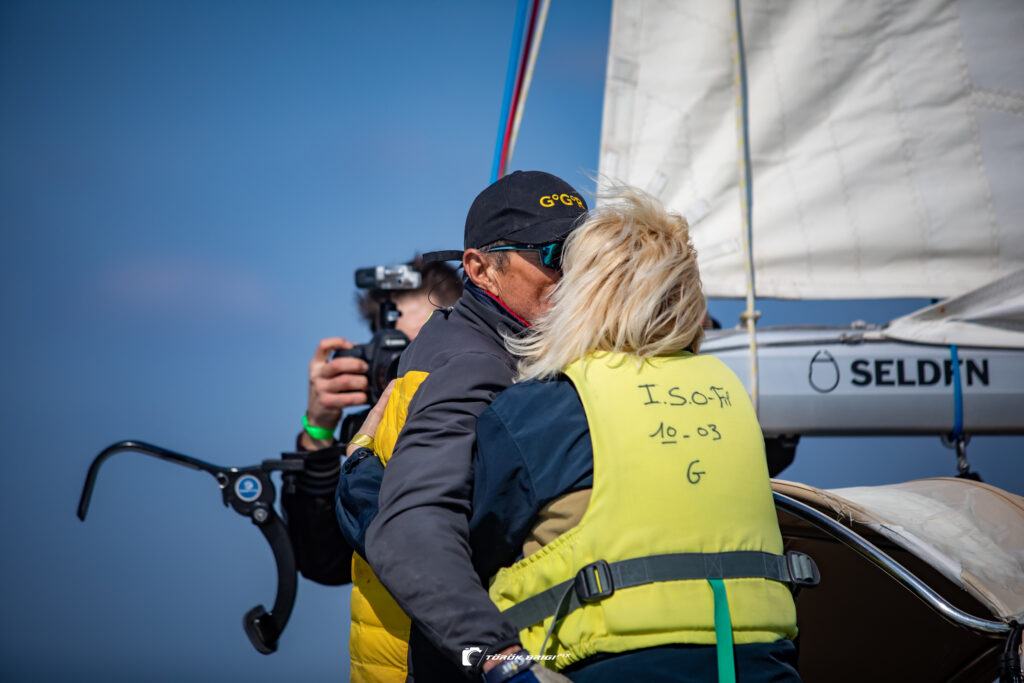
Finish kiss...
Escorted by a colorful fleet of vessels—RIBs, sailboats, and powerboats—welcoming family members, friends, race organizers and fans on board.
The reception was unparalleled. I got the first hug from my boarding wife while passing Puffin’s helm to one of my very first sailing students, Richard Reisch.
I received the second hug on land from Yannick, the Mayor of Les Sables. I had met him in Hobart the last time, but due to the strict race rules, we could not even shake hands then.
Les Sables d’Olonne has several outstanding features, but its relationship with solo offshore sailing is probably the most unique. Its population has been deeply connected to the sea due to the city’s geographical location—in the middle of the ill-famed Bay of Biscay—and its prevailing fishing trade.
There is no match for the local’s enthusiastic welcoming anywhere else.
To start and finish a circumnavigation here is perhaps the greatest reward for a solo sailor.
From the bottom of my heart, I hoped that Puffin and I delivered some inspiration and faith (besides the first day of spring) and returned the love we got here from the welcoming people.
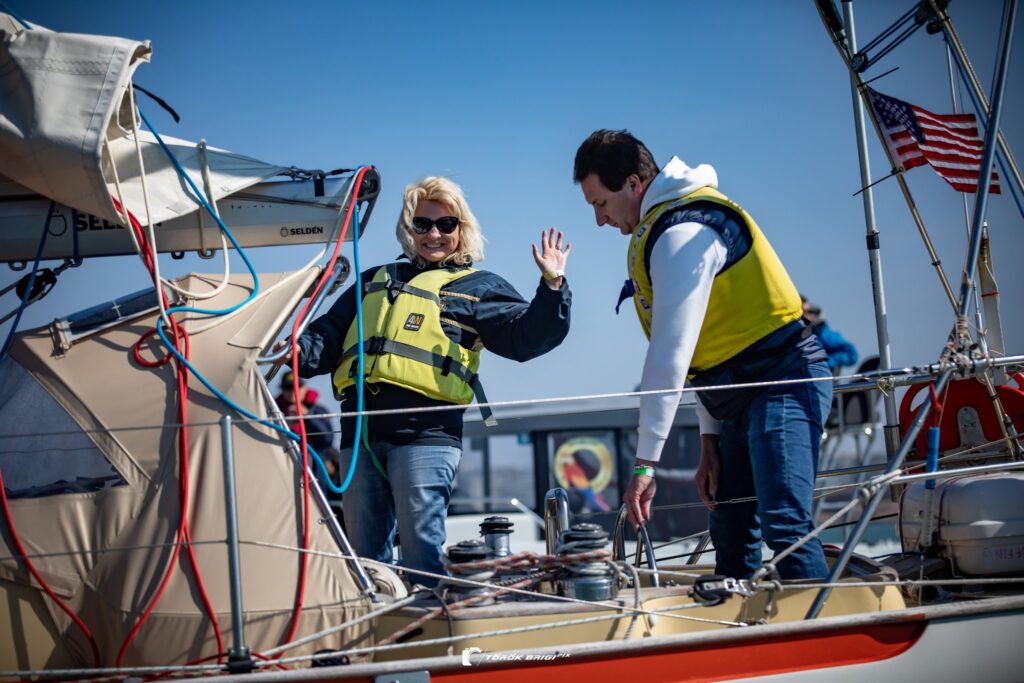
Eva and Ricsi, my very first sailing student ( from 1984) boarded Puffin first after crossing the finish line
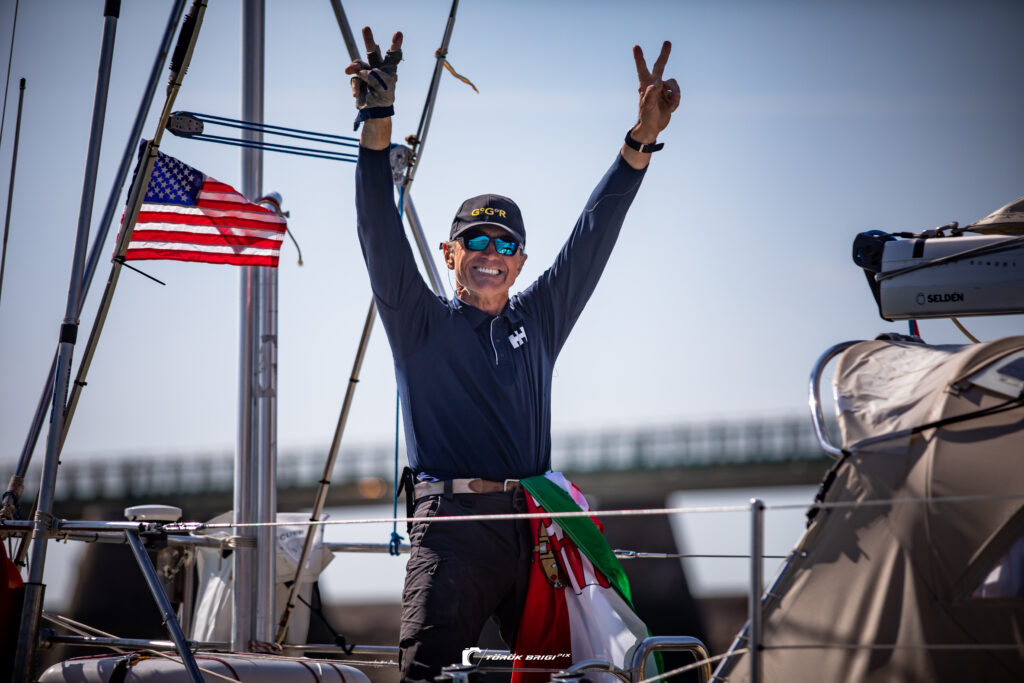
Finish photo with US & Hungarian flag...
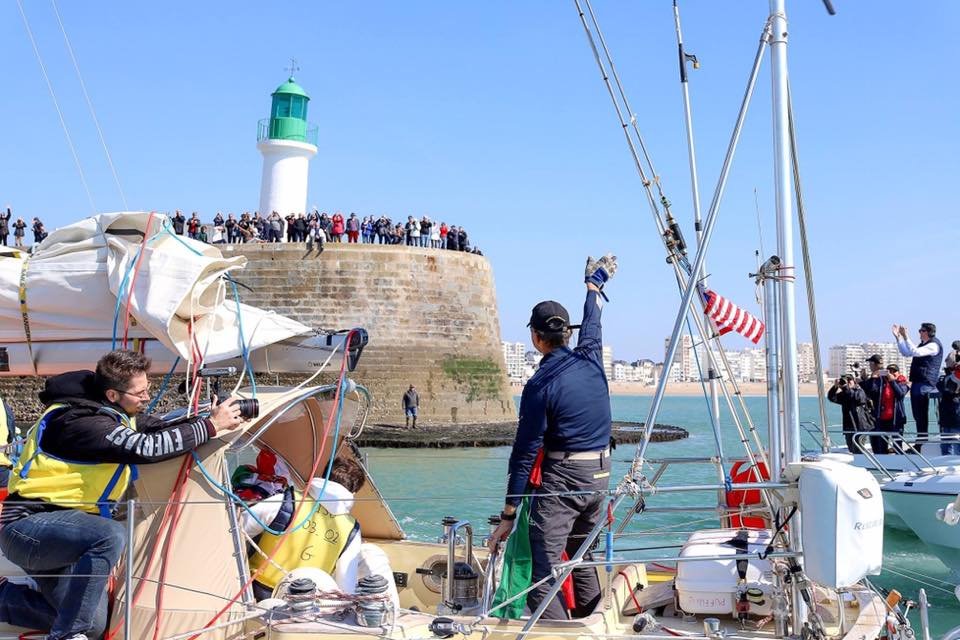
Les Sables d’Olonne is the capital of offshore solo sailing for a good reason. The appreciation of its residents cannot be exceeded…
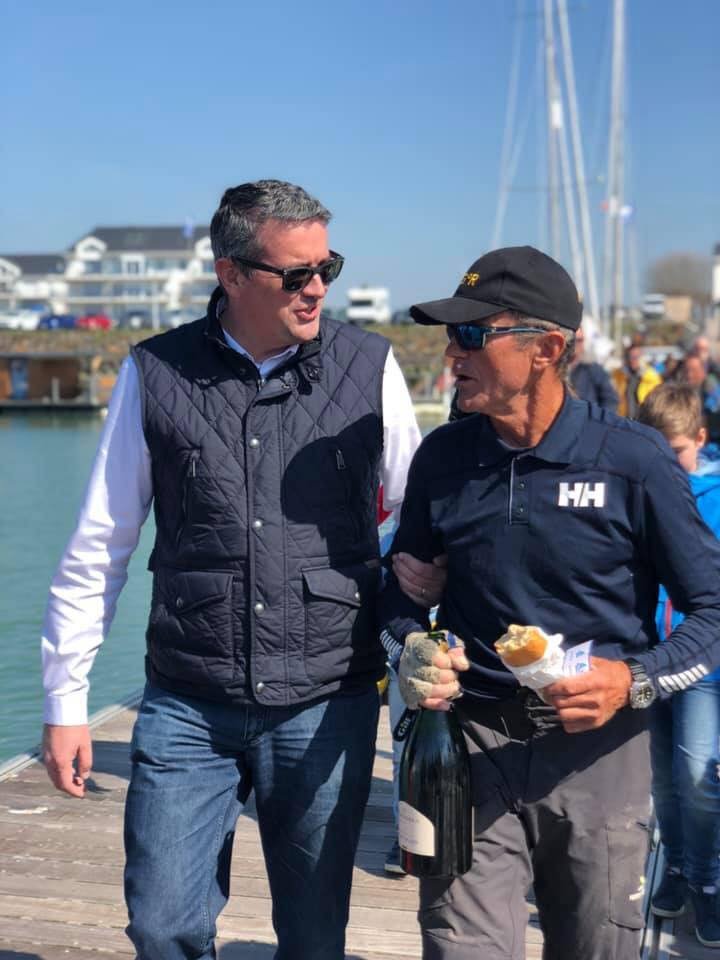
First sandwich after 263 days in Yannick’s company who is the most welcoming host ever and probably one of the best mayors of Les Sables d’Olonne
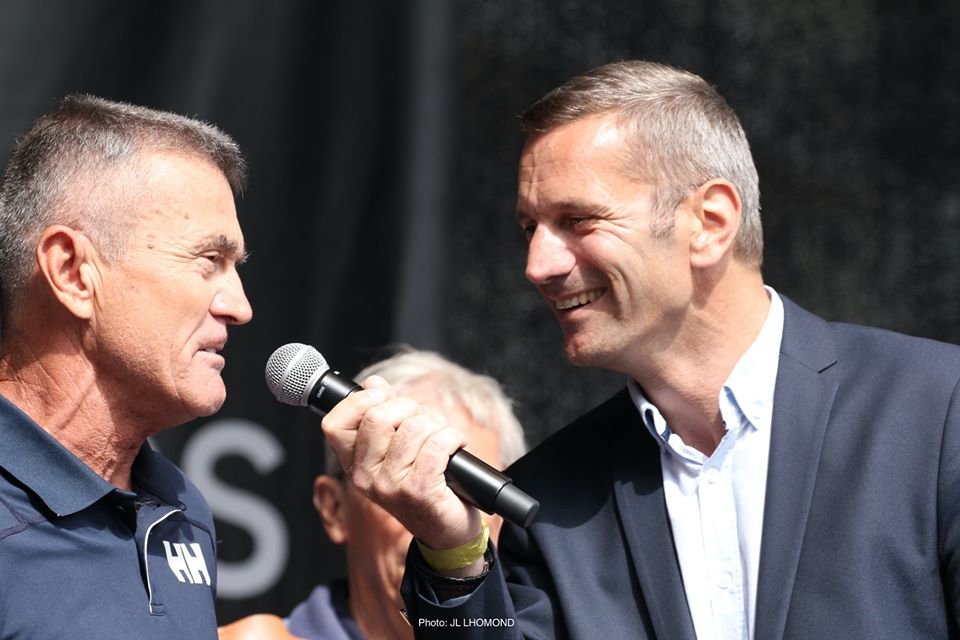
First interview on the podium
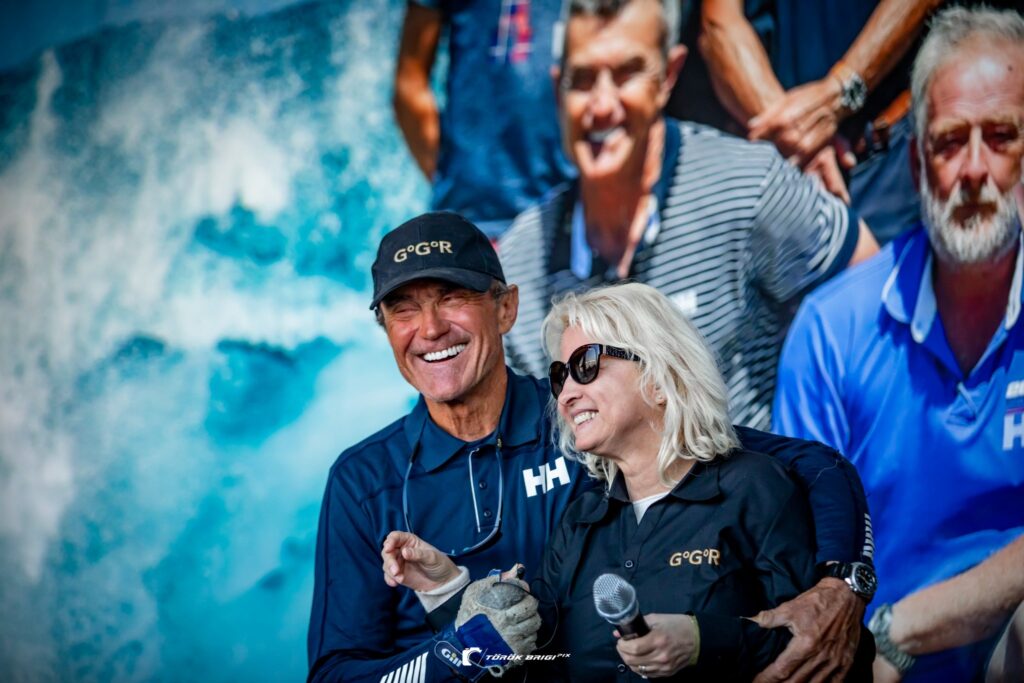
On podium with my sweetheart and main sponsor…
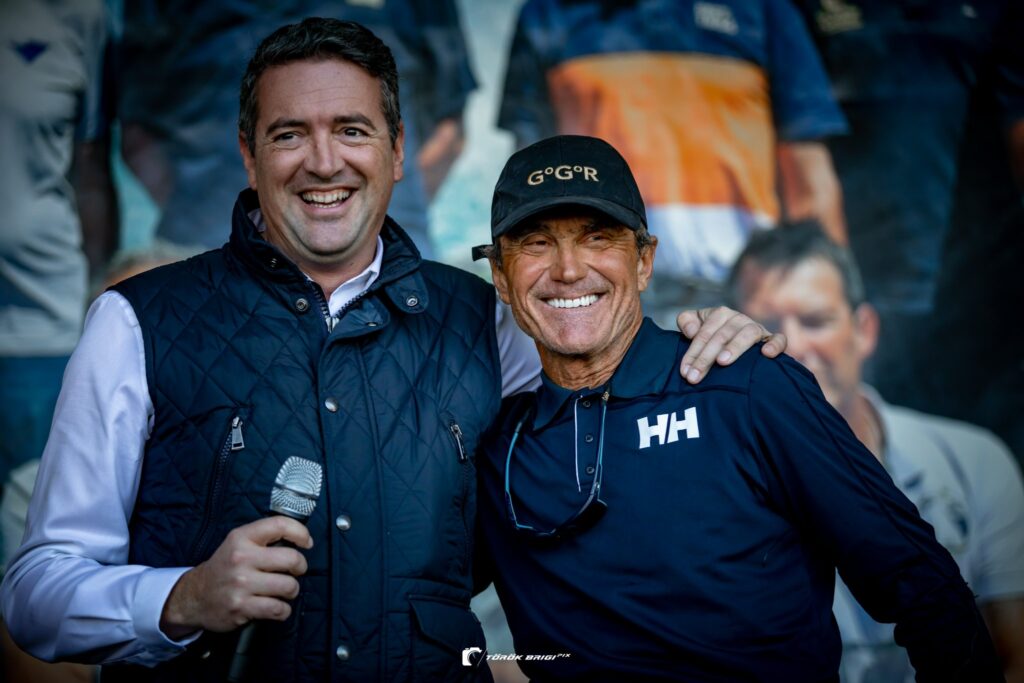
Sailing is much more than racing…
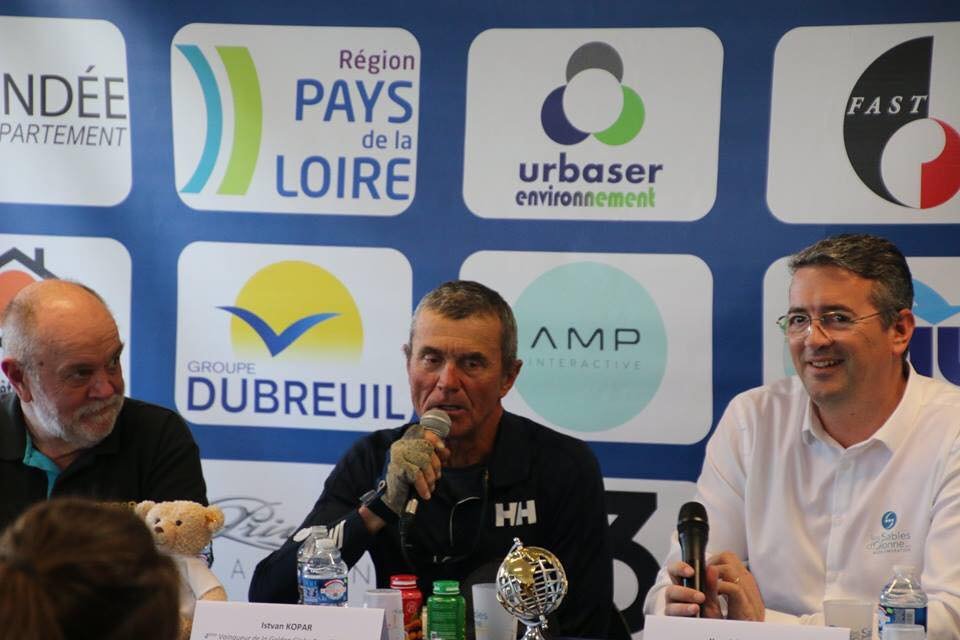
First press conference in Les sables on March 21st 2019

The reward of the 4th place was both hand & heart made!
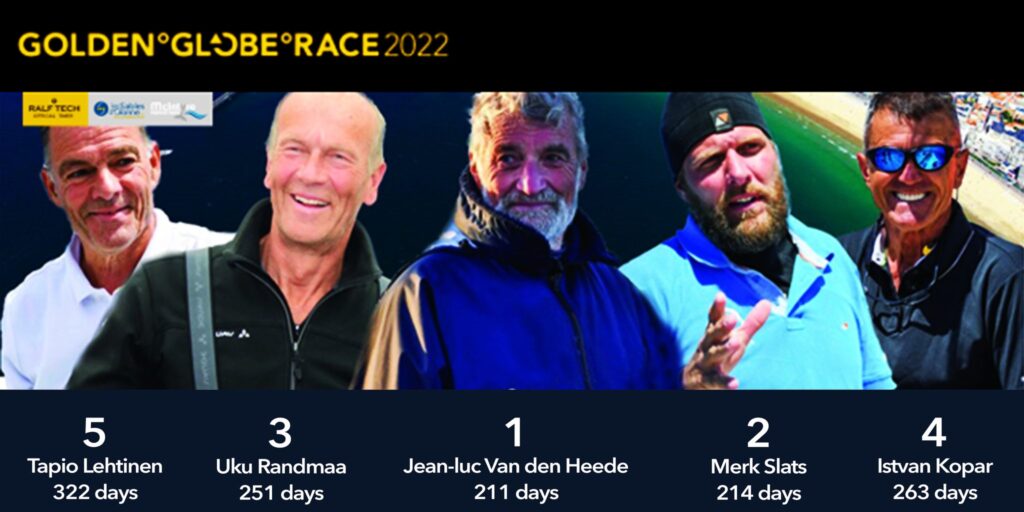
5 from 18…

This race was not about money but the first 4 would have been awarded with prize money as per original NOR...
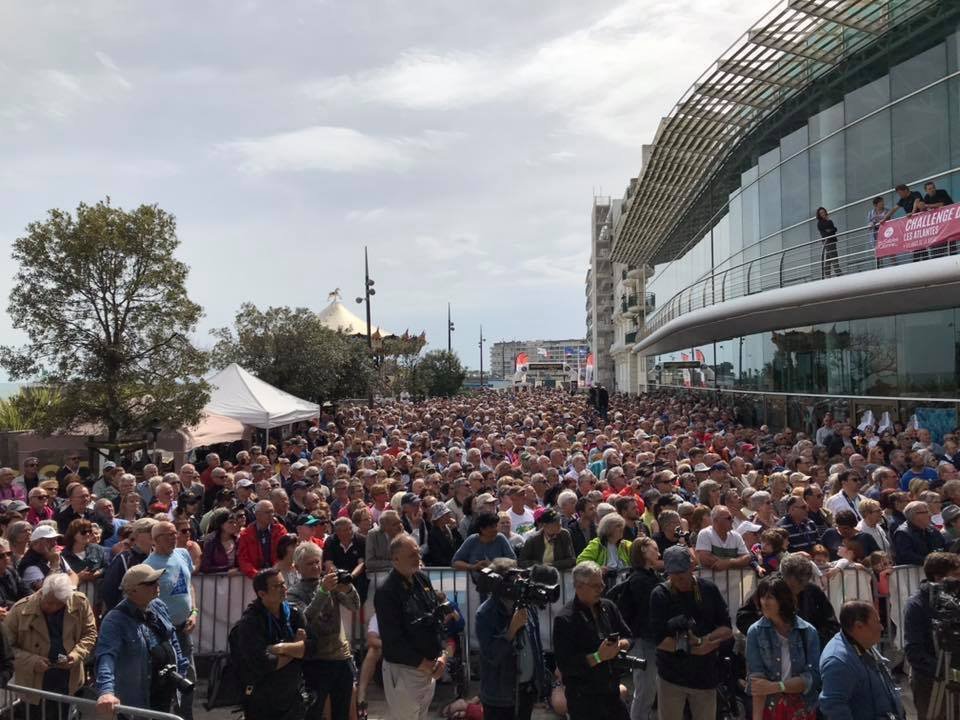
Love in the air and on the ground in Les Sables…
Epilogue
Puffin finished in fourth place among eighteen boats, though she was considered the slowest one per her physical features.
Currently, only six sailboats in the world have completed the Golden Globe Race, including the 1st one, in 1968.
The Golden Globe Race was my third circumnavigation, but each was very different.
The first time I sailed solo was in 1990-1991. I made one stop in Fremantle, WA. I was in a homemade 31’ sloop and sailed via the five southernmost Capes like the sailors in 1968—without GPS, autopilot, radar, water maker, AIS, Satellite phone, or EPIRB.
I was the first Hungarian who circumnavigated the globe solo with one stop and achieved an average record speed of 125 NM/day.
The second time, I organized and skippered the very first Hungarian sailing team and boat in a circumnavigation race, the Hong Kong Challenge Around the Globe Yacht Race. I won the Hong Kong Challenge Trophy as the skipper of the fastest yacht in 1996-97.
In global maritime and sports history, only ten sailors have completed solo, nonstop, unassisted circumnavigations relying purely on celestial navigation.
And I am extremely lucky to be among them.
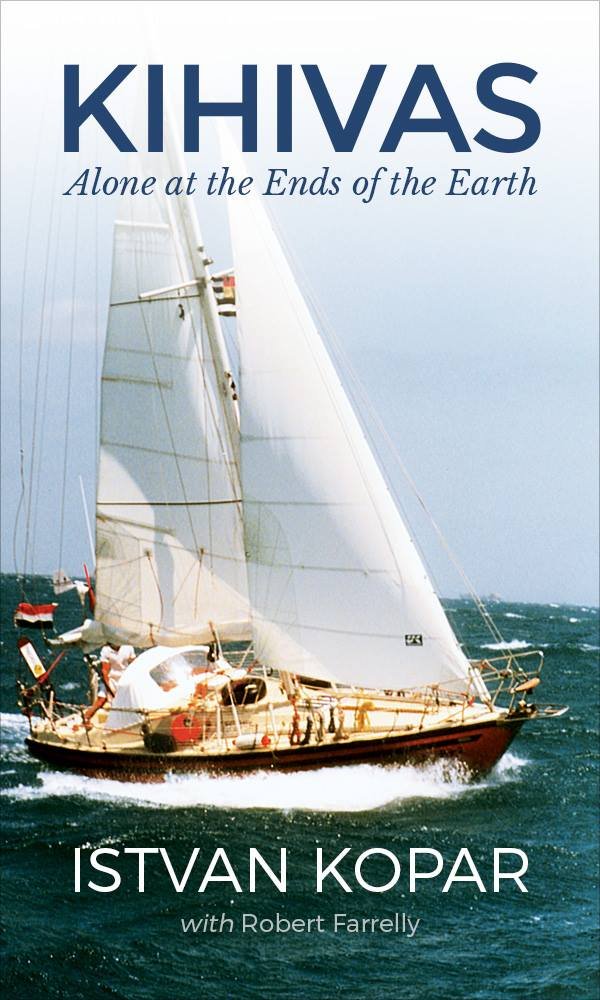
The story of my 1st solo circumnavigation…
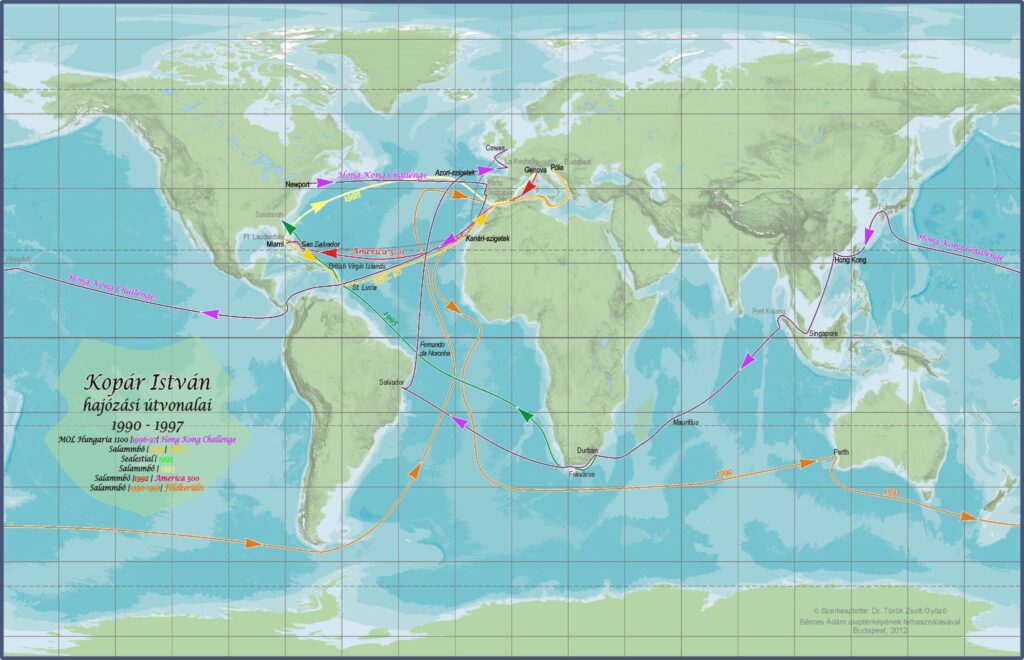
Sailed offshore sea miles before GGR…
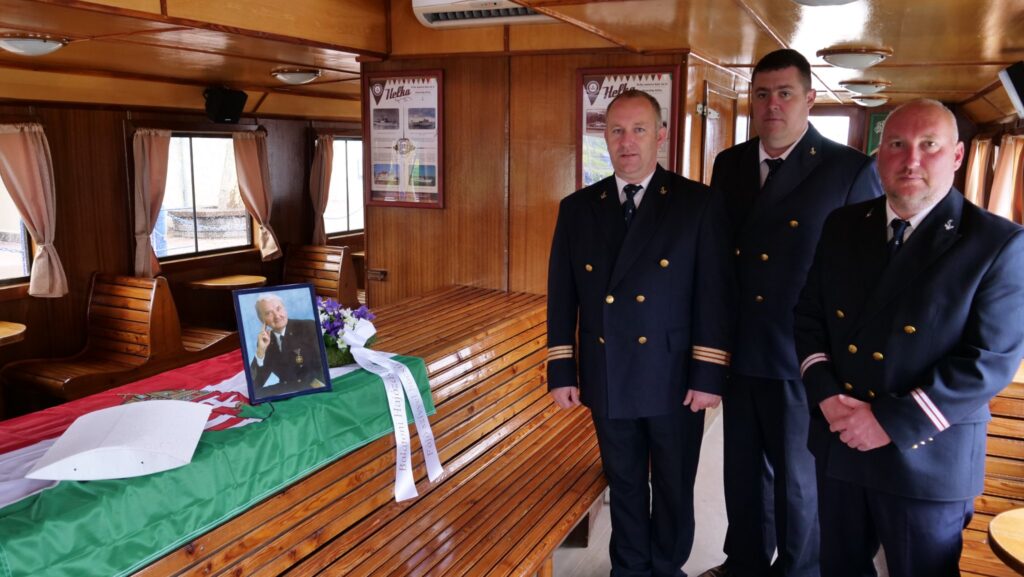
My Dad’s circumnavigator ashes on board of his rescued ship Helka in Bay of Keszthely ( his birth place) on Lake Balaton ( April, 2019)
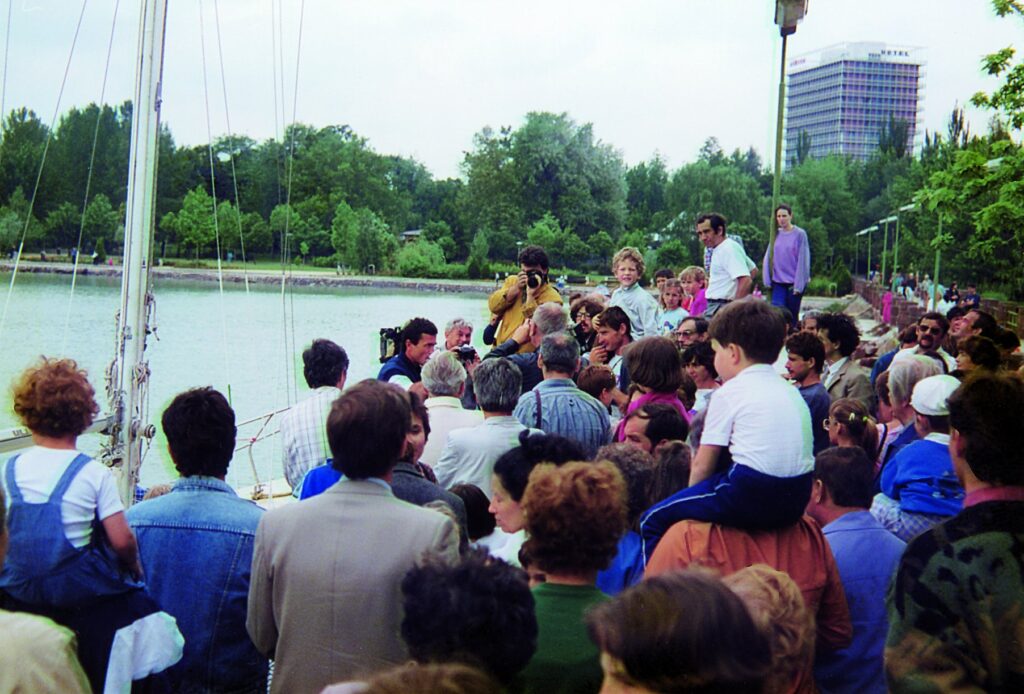
The finish of my 1st solo circumnavigation in 1991
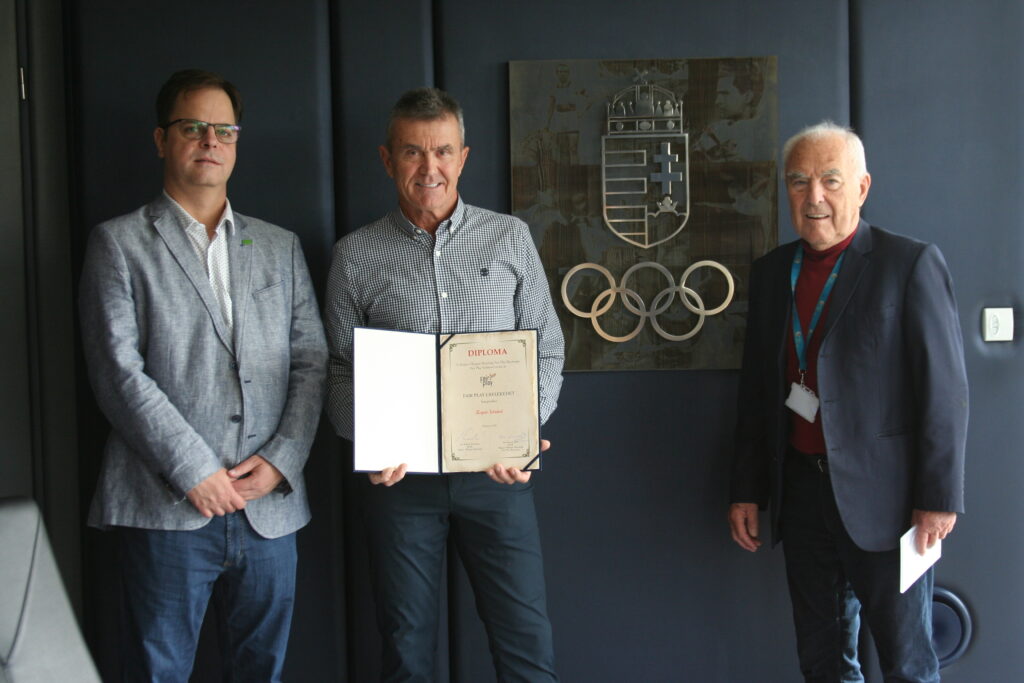
Extra bonus was after the race to receive the Fair Play Award
I consider Puffin, a Tradewind 35’, the most seaworthy boat in the GGR fleet, thanks to her major, three-year-long refit before the race.
The equipment-related technical problems and the lack of time to test them occurred due to the poor budget. Money always talks…
The original Golden Globe Race in 1968/69 was the real deal regarding solo achievement. The sailors chose their boat, equipment, and routing, and there was neither a tracking device nor a Satellite phone on board.
The race, 50 years later, cannot be compared to the first one despite the organizers’ best intentions.
In 1968 the race rules were brief and simple. The participants entered the race under their own personal responsibility, and everyone prepared for it and sailed in it by their own decision.
Nowadays, the responsibility has been moved to the race organizers, who get into trouble if “the soup pours out of the pot.”
They were forced to create a very lengthy, detailed, and constantly changing rule book (NOR) regulating every aspect of the race, which, in my opinion, killed the essential part of it—the soul or the race.
It also impacted the sailor’s preparation and qualification process, mainly financially.
In addition, the focus of the race preparation shifted to the potential rescue operation, communication, and equipment, serving as a responsibility waiver.
The current, high-tech communication was another development that harmed the soul of the original race. In 1968 competitors could communicate with the outside world via their HF radios, just like us in 2018.
They could receive weather forecasts and storm and ice warnings, but they did not have a Satellite tracker and weather routing service on land available.
This technological evolution impacted the image of solo, unassisted sailing and sportsmanship negatively.
Accordingly, I consider my circumnavigation the closest one to the spirit of the original Golden Globe Race, as I was able to accomplish it without outside assistance despite ongoing technical issues.
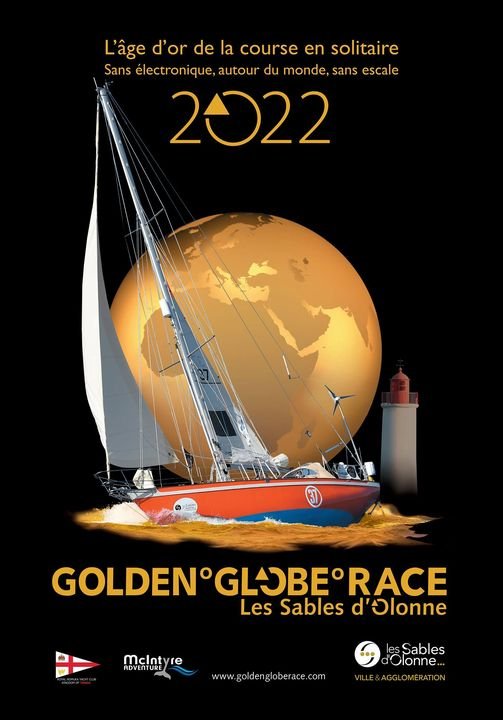
My most appreciated accomplishment to see Puffin alive and keep rolling…
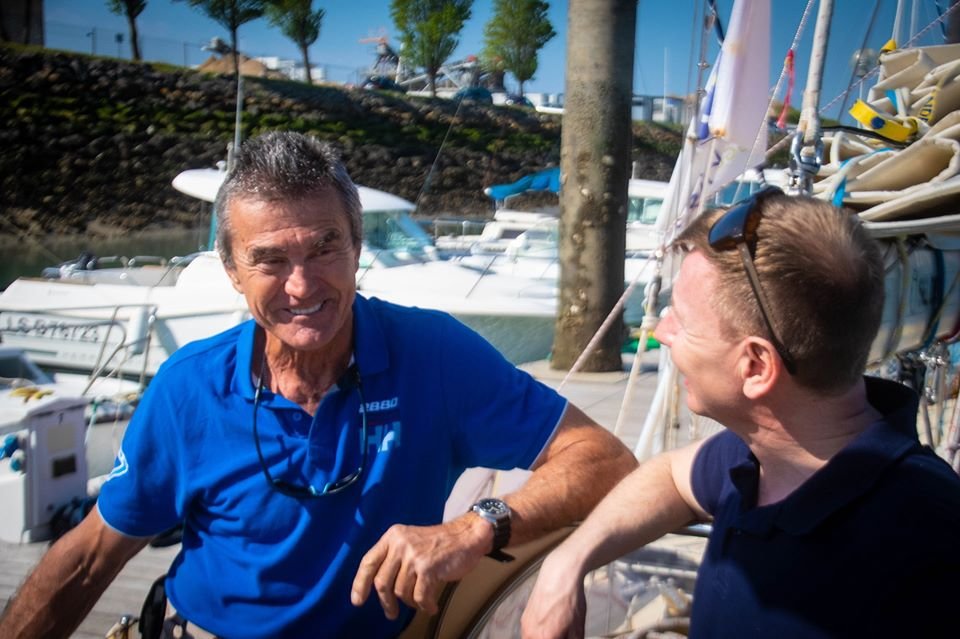
Painful farewell to Puffin but hoping for her best future in Ian’s care…
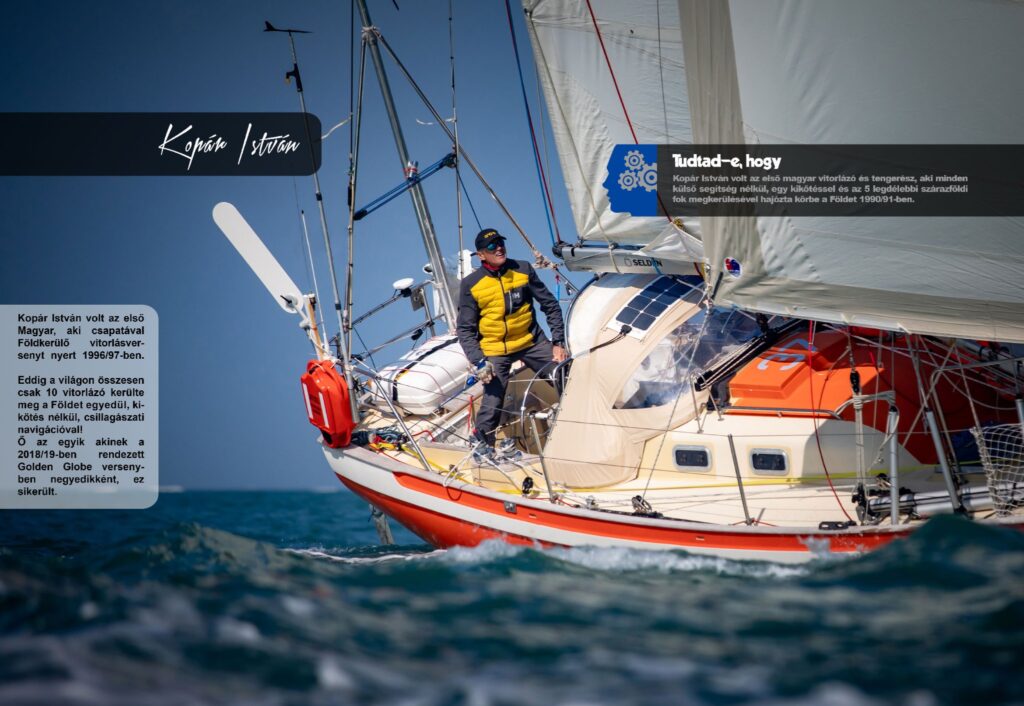
Puffin’s photo got landlocked in the Aula of TE (Hungarian University of Sports Science)
My other pride has been Puffin’s salvage; I saved her life and brought her back to the ocean. And she has been sailing there since.
The solo sailor is alone in the boat only. The achievement must be shared with a great number of supporters, family members, friends, and fans on land.
My gratitude goes not only to my family members and close friends but to my named sponsors and unnamed donors who were all aboard Puffin during this venture.
Thank you, and God Bless you All!
To be continued GP…
Family members, friends, donors, supporters, fans tank you, again to all of You!
Big thank you to my sponsors who supported me both financially and with their faith!
Also huge thank you to my team managers: Robert Farrelly and Ian Gumprecht!
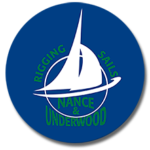










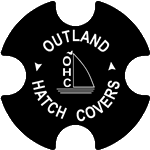
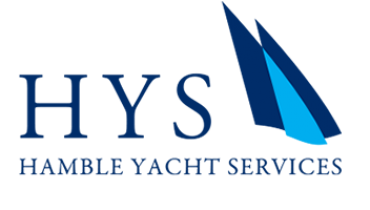

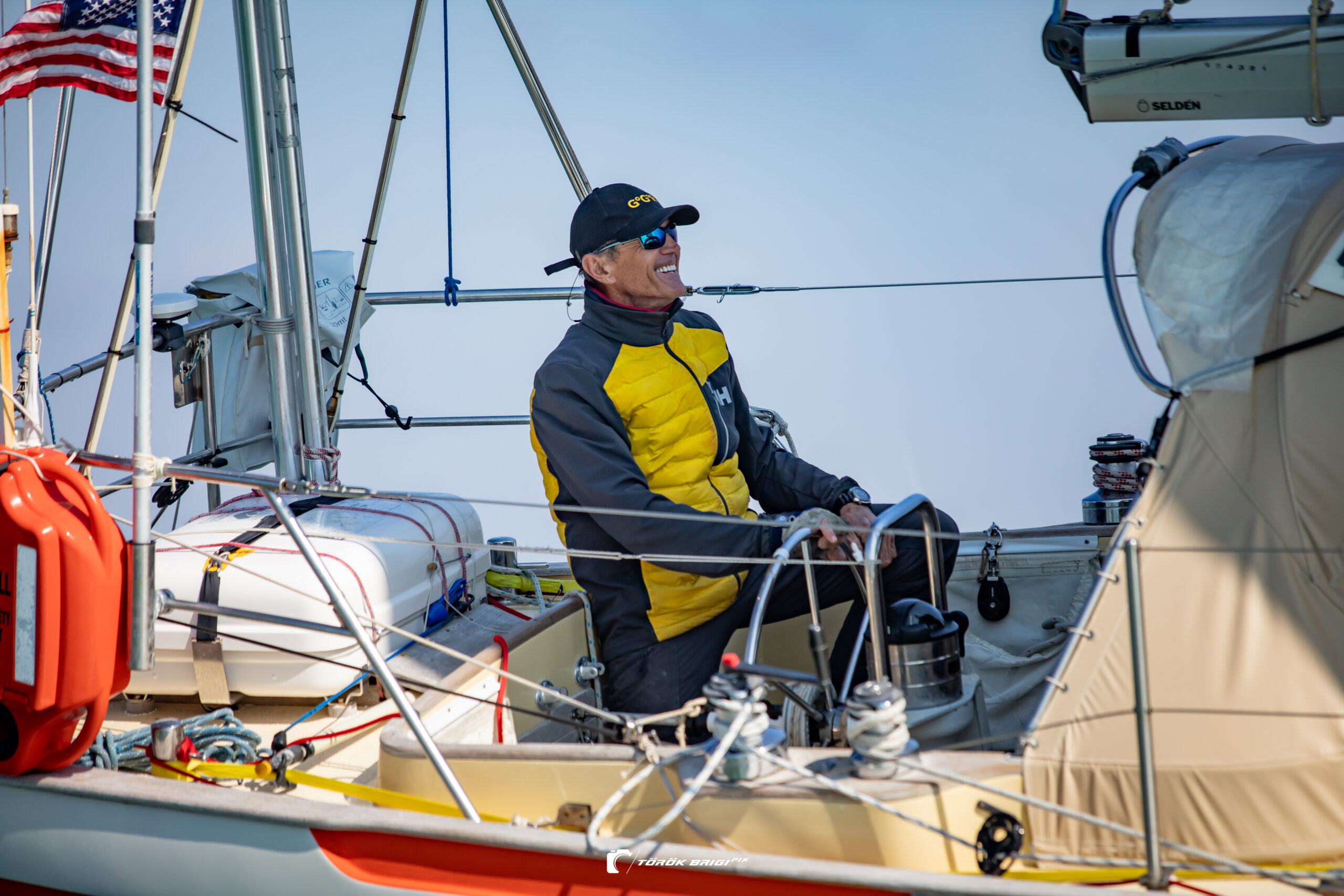

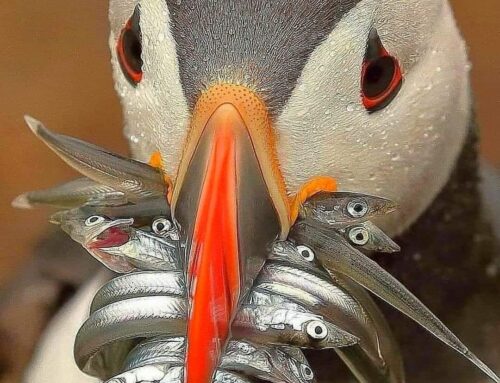
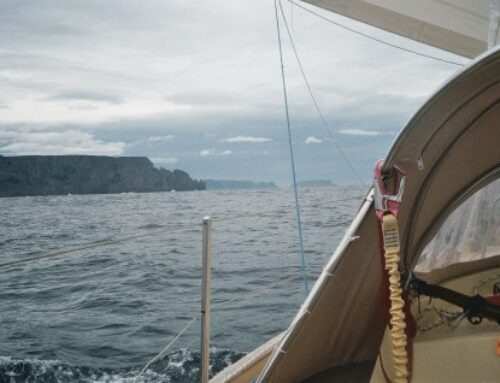
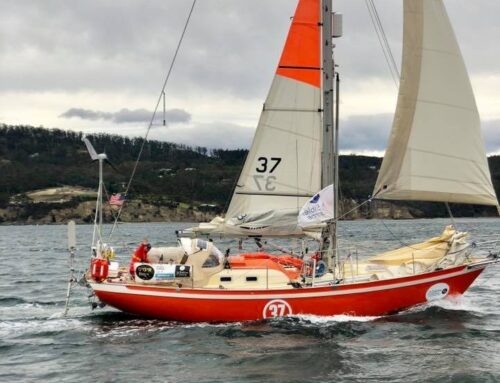
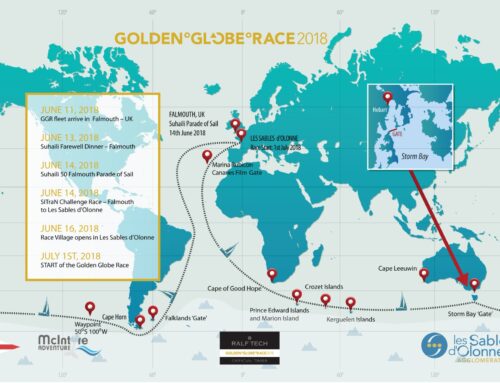
Gratulálők a teljesítményéhez!
Örömömre szolgál, hogy követhettem ezen a csodálatos versenyen.
Külön öröm, hogy Puffin újjászületett, mint egy főnixmadár.
Szép szelet Kopár István!